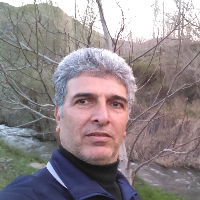Evidence of the Ritual-Spiritual Function of Cowrie in the Ancient Tissues of Iran from the Third Millennium to the End of the First Millennium BC based on the Approach of the Ethnoarchaeology
shell A type of seashell called Cowrie, which in Persian is called by several names such as “Gajak” or “Kojak” and... So far, in many ancient deposits from the third millennium BC to the first millennium BC, mainly in the form of personal ornaments with the deceased and in some cases from the places of worship in large numbers, has been obtained. In all published reports, the mere accompaniment of these objects with other personal ornaments has introduced them as personal ornaments, while the question arises as to how this decorative tradition has remained for more than five thousand years. Given that some of today’s indigenous peoples believe beyond the aesthetic aspect of shell; These beliefs can be considered remnants of more ancient rituals? Based on this, it is hypothesized that the continued use of a non-indigenous object over time is related to a religious-ritual belief. Why at the same time the scope of such a phenomenon in the form of use in prayer and burial contexts not only in the cultural borders of Iran but also in large areas of the Eastern Levant and the Middle East has already been reported. Field ethnographic study of some indigenous peoples in western and southwestern Iran shows that these objects are used only for children regardless of gender and in adults only for women, which indicates the existence of a kind of gender and age taboo for it and belief The association of these objects with the person, in addition to the special aesthetic aspect, causes the repulsion of an evil eye They eliminate imperfection and attract goodness and blessings. This phenomenon is seen in ancient textures in the form of shell in the graves of women and children in excavation reports. But there is no sign of the use of these shell as a dignified commodity that belongs to a certain class of people in society. In a comparative analysis on the goals envisaged for this Kajak in both the contexts of ethnology today and contexts of ancient attitude toward ritual and spiritual practice, this assumption is approved only aspects of belief has caused Kajak shell has been considered for a long time and have been transported as a precious commodity by a commercial network from the coasts of the Persian Gulf and the Indian Ocean to parts of the Iranian plateau.
- حق عضویت دریافتی صرف حمایت از نشریات عضو و نگهداری، تکمیل و توسعه مگیران میشود.
- پرداخت حق اشتراک و دانلود مقالات اجازه بازنشر آن در سایر رسانههای چاپی و دیجیتال را به کاربر نمیدهد.



